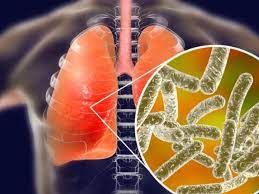A few days ago, the Minister of Health of Argentina, Carla Vizzotti, and the representative of the Pan American Health Organization (PAHO), Eva Jané Llopis, announced the evolution of the Legionella outbreak in the province of Tucumán.
The Minister clarified that “in this bacterium the source of infection is by inhalation when it is in the air conditioning tables, the pipes, it is aerosolized and it is not transmitted from person to person.” This occurs in a health center in Tucumán and is fully controlled.
According to the progress of the investigation of the epidemic, as of September 8, 22 suspected cases of Legionella disease have been identified and 6 people have died, of which 4 results are compatible with Legionella pneumophila and one with Legionella spp. The investigation is currently ongoing, including looking for more cases among people who may have been exposed.
Most people get Legionnaires’ disease by inhaling the bacteria from water or soil.
Legionella bacteria can be found in places like lakes and streams. These bacteria can become a health concern when they multiply and spread through household hot water pipes such as sink faucets and shower heads, where they form aerosols that we can breathe.
This disease is not spread orally, but by the aerosolization of contaminated water through different mechanisms (cooling towers, hot showers, spas, irrigation water, etc.).
The symptoms caused by contracting this infection are similar to those of other types of pneumonia such as: Cough, shortness of breath, fever, muscle aches and headaches.
To date, there are no vaccines that can prevent the disease caused by Legionella bacteria. By virtue of this, we must prevent, managing to reduce the risk of the multiplication of bacteria and their transmission.







